Relations of Fluidity
Raminder Kaur
Sikhism grew out of a devotional blend of Sufi and bhakti influence that over time led to its distinctive character that we see today. To similar ends, from its founding years in the late sixteenth century, the Harmandir Sahib was envisaged as a place for people of all castes and creeds with doors open on all its four sides, yet it is also the central shrine of Sikhism.
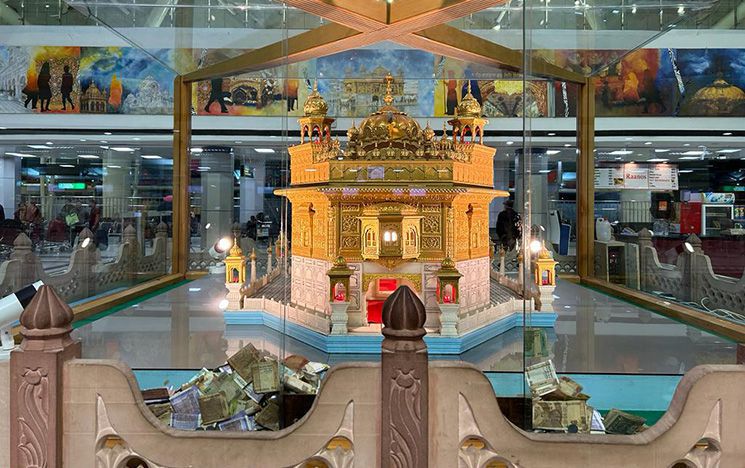
Figure 1: Model of Harmandir Sahib (Golden Temple) at Sri Guru Ram Das Ji International Airport in Amritsar
Kavita Bhanot is one person who relates to these more fluid aspect of fixities – not just in terms of the watery environs of the sarovar but also what the place means for her in terms of her location, identity and politics. Born in England and having lived for several years in Delhi and a village in the Indian hill tracts of Himachal Pradesh with frequent visits to see her relatives in Panjab and her sister in Mumbai, she is researcher and creative writer now based in Birmingham. Her paternal ancestors had to leave their natal village, Sheikhupura, Gujranwala District in what became Pakistan. They travelled across the border by train to Amritsar:
‘My father’s family lived in Amritsar for many years. His parents were both engaged for an arranged marriage, and at partition [in 1947] the families got separated because of the communal violence. Later, my grandmother glimpsed my grandfather at the Amritsar train station. They got married and then went to Ludhiana to live.’
Such tales of separation and reunion are rare in the archives of partition history.
In the 1960s, Kavita’s maternal grandparents came to England on the ‘voucher system’ with her grandfather coming first and after a year returning with his wife and children including Kavita’s mother – nine years old at the time. They came to live and work in south-east London. Her father came to the UK as an adult to marry her mother. Kavita first studied at the University of Birmingham, before continuing her education at Warwick and Manchester Universities and has now settled in Birmingham with her husband and three-year-old son. To settle there was ‘an instinctive heart thing’ – a city where she, has studied, created community and learnt more about her history and identity. She has also written a draft of a novel set in Birmingham in the 1980s.
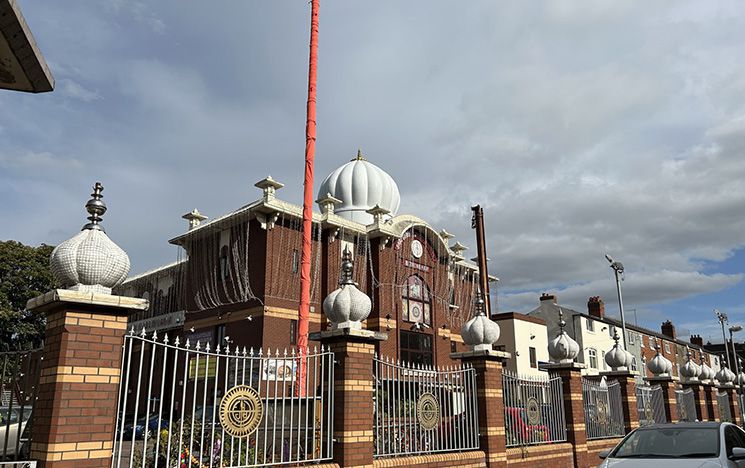
Figure 2: Birmingham street with Shri Guru Ravidass Bhawan
With her familial and vocational interests in South Asia, Kavita has travelled to Amritsar several times, each time visiting the Harmandir Sahib:
‘The first time I went to India was when I was three years old, and we have photographs of me and my family sitting in front of the Harmandir Sahib. I didn’t go to India again until I was in my 20s, when I lived there. I went to Harmandir Sahib a few times during this period – often with my family, and one time with a friend from England.’
Her first memory of the Harmandir Sahib was based on the uncanny actualisation of reproductions of the place:
‘I had always seen so many images of the Harmandir Sahib. They were part of my imagination. It was kind of surreal to see it live, to see a place that my nani [maternal grandmother] would talk about, that I heard about in stories. There was an openness about it, as if it was expansive.’
Her experiences floated between being a tourist, seeing the place as aesthetically enriching, but also one that was more than that, based on a sense of spiritual and intellectual exploration. Her maternal grandmother, ‘a gifted story-teller,’ provides important anchorage to adopting an appreciative yet critical lens on her experiences:
‘I grew up in a context which was religiously fluid among Panjabi communities, so I felt affiliated to the place. I grew up going to a gurdwara and got married to my husband [who is a Sikh] in a gurdwara. My grandmother had an image of Guru Nanak [the founder of Sikhism] in her house, she mostly went to the local gurdwara in Woolwich, and only had a gurdwara in her village in Panjab where she used to go. We had a lot of Sikh friends. I feel more comfortable in a gurdwara [associated with Sikhism] than a mandir [associated with Hinduism]. But it’s complex.’
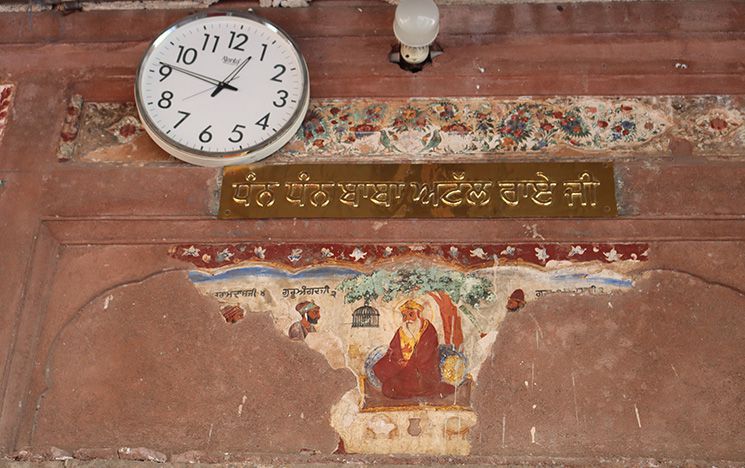
Figure 3: Mural of Guru Nanak Dev on Gurdwara Atal Sahib in Amritsar
This complexity arises out a keen critique of religious hegemonies and violence that accompanies, as she elaborates in her essay, ‘Problematizing Punjabiyat: A Case Study of Brahmanical Patriarchy’. Kavita’s experiences of the Harmandir Sahib are tied up in an aporia that rests on appreciation while also being critical of enveloping dynamics:
‘There’s a pull to the place, the words, to the music - I grew up with kirtan [devotional singing], even tried to learn it, and it felt familiar. This pull cannot be explained. There’s something that connects you beyond your head. It is out of this world, like a universal energy. But I also have an inner voice that is critical…of everything. I see everything around me, not in terms of binaries but in terms of layers of power and appropriation.’
However loud this voice, she also doesn’t want rationalisation to dominate: ‘There’s something problematic about that, as it’s about getting mastery. I need to allow myself space to just be.’
Effectively for Kavita, the Harmandir Sahib is more than just a religious icon, or an economically powerful hub of pilgrimage alone: ‘It meant something to me that I cannot fully explain.’ This sense was born out of the combined force of family histories, vernacular familiarity, and her critical drive to unpack hegemonies:
‘I’m not a believer in any faith or religion but I also don’t identify with atheists. I’m deeply invested in the spiritual and intellectual. I have a lot of respect, learning and understanding of other worldviews, including those who have faith. My husband’s faith is important to him, and I want him to share this with our son. I can also understand when people feel oppressed and marginalised in their right to believe and practice - their need to assert their religious identity.’
For Sikhism, this sense of fragility arose out of the need to assert it as a religion in its own right, not subject to erasure or being swallowed up by Hinduism: ‘India was created as a Hindu country. even if people talk about it as secular,’ Kavita explained, ‘While Christianity and in particular Islam are othered, Sikhism, Jainism and Buddhism are presented as if they are strands of the country’s so-called majority religion.' This is also evident today, where the Hindu nationalist Bharatiya Janata Party government has tried to take over the Harmandir Sahib through influencing members of the Shiromani Gurdwara Parbandhak Committee (SGPC) especially when it comes to the time of annual elections of their president. The SGPC are not only influential religiously but also politically and economically, being caretakers to millions of pounds in terms of donations, a sum that is reputed to be larger than the revenue of the Panjab state government, and therefore the hub of machinations and designs for control.
While the Harmandir Sahib is a sanctuary for some, Kavita asserts that ‘there are no spaces of sanctuary. There’s always politics, hierarchy, and violence. There’s absolutely nowhere that is free of that. 1984 is a very clear example of that.’ 1984 refers to when the Congress prime minister Indira Gandhi took the fateful decision to send the army into the Harmandir Sahib complex with Operation Bluestar to oust Jarnail Singh Bhindrawale, a charismatic sant-siphahi (saint-soldier) who she had earlier sponsored to break her opponents, the Akali Dal and Janata Dal parties’ alliance.
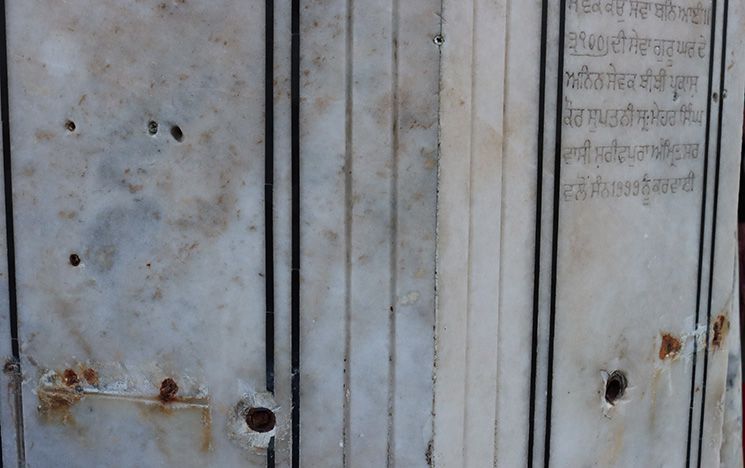
Figure 4: Bullet holes on marble pillars from Operation Bluestar involving the (para)military storming of the Harmandir Sahib in 1984
Kavita elaborated: ‘I did a lot of reading about what happened – trying to make sense of what happened at that time. My general feeling was that it was an evil thing to do - so many people being killed, a media blackout, the whole area put under curfew. Congress and Indira Gandhi did not have respect what the place meant to people. Generally in the country – apart from Sikh communities - there isn’t a sense of how serious the events were. Or even knowledge of what happened. It’s not understood. The fact that I was from a Hindu family, it wasn’t discussed at all. I remember Indira Gandhi’s death being more significant in my immediate family context – I ended up asking questions about why this was, especially considering my family’s affiliation to Sikhism and religious fluidity. It’s only as an adult that I looked into it, that I researched and read and talked to people to appreciate that this is huge. It was then that I discovered other perspectives.’
Kavita is perhaps like the embodiment of the principle of the architecture of Harmandir Sahib – open on all sides.’ This openness always comes with a critical lens on anything that tries to manipulate or shut these avenues off.
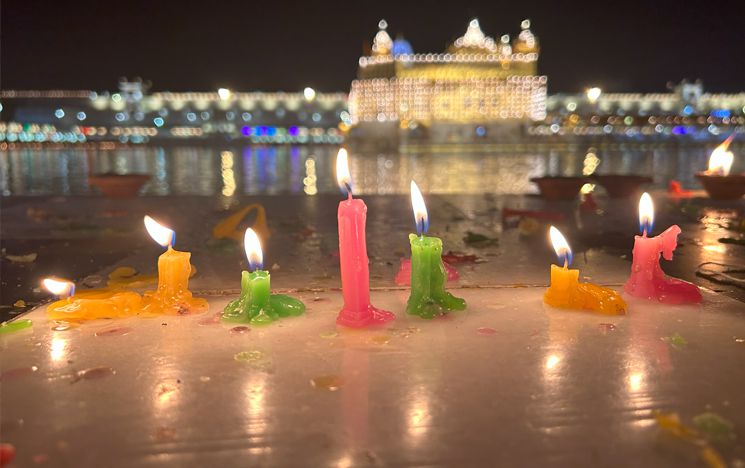
Figure 5: Celebrating Gurpurb at Harmandir Sahib